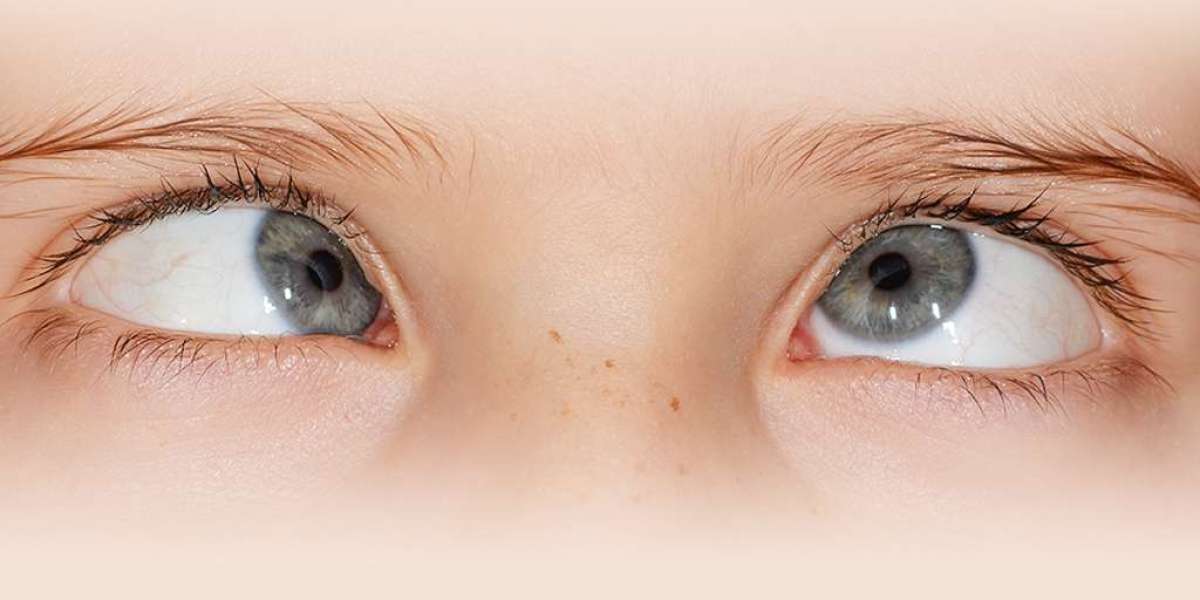A squint, medically known as strabismus, is a visual condition where the eyes are not aligned properly. While one eye may focus straight ahead, the other may turn inward, outward, upward, or downward. This misalignment can lead to serious issues such as double vision, poor depth perception, and even vision loss if left untreated. But the good news? With timely diagnosis and advanced squint eye treatment, many patients achieve full vision correction.
In this comprehensive guide, we’ll dive deep into the causes, symptoms, types, diagnosis, and available treatments for squint eyes. Whether it's a child showing early signs of misalignment or an adult dealing with long-term strabismus, there are solutions that can dramatically improve both function and appearance.
What is Squint Eye?
A squint eye is a condition where the eyes do not move together or focus on the same point at the same time. It can occur occasionally or be constant. In many cases, squint develops in childhood, but adults can also develop squints due to injury, medical conditions, or untreated childhood squints.
Common Causes of Squint
Understanding the causes of squint eye is the first step toward effective treatment. Here are some common reasons:
1. Congenital Causes
Some babies are born with a squint due to abnormal muscle or nerve development.
2. Refractive Errors
Uncorrected long-sightedness (hyperopia) can cause the eyes to over-focus, resulting in a squint.
3. Neurological Conditions
Conditions such as cerebral palsy, Down syndrome, or stroke can disrupt the nerve signals that control eye muscles.
4. Trauma or Injury
Head injuries or damage to the eye muscles may lead to squint eye.
5. Poor Vision in One Eye
Amblyopia (lazy eye) or cataract in one eye may lead to misalignment of the eyes.
Types of Squint
There are several types of squint eye, classified based on the direction of eye misalignment:
- Esotropia: One or both eyes turn inward.
- Exotropia: One or both eyes turn outward.
- Hypertropia: One eye turns upward.
- Hypotropia: One eye turns downward.
- Alternating Squint: Both eyes take turns being misaligned.
Each type requires a specific squint eye treatment approach.
Symptoms of Squint Eye
The symptoms may vary based on the type and severity, but common signs include:
- Misaligned eyes
- Double vision
- Difficulty focusing
- Frequent eye rubbing or squinting
- Head tilting to one side
- Eyestrain or fatigue
- Poor depth perception
In children, these symptoms might go unnoticed, which is why early eye screening is vital.
Diagnosis: How is a Squint Detected?
Early detection can significantly improve the outcomes of squint eye treatment. Diagnosis typically includes:
- Visual Acuity Test: To assess how well each eye sees.
- Cover Test: To determine eye alignment.
- Refraction Test: Checks for refractive errors like myopia or hyperopia.
- Retinal Exam: Assesses the eye's structure and health.
- Eye Movement Tests: To evaluate the strength and coordination of eye muscles.
An ophthalmologist or optometrist can conduct these tests and recommend suitable treatment.
Squint Eye Treatment Options
Squint eye treatment varies depending on the type, cause, and age of the patient. Let’s explore the most common options:
1. Glasses and Contact Lenses
For squints caused by refractive errors, corrective lenses may align the eyes properly without needing further treatment.
2. Eye Exercises
Orthoptic exercises can help improve coordination and control of the eye muscles, particularly for mild cases.
3. Patching Therapy
If amblyopia is present, patching the stronger eye encourages the weaker one to function properly and align better.
4. Prism Glasses
These specialized lenses adjust the light entering the eyes to reduce double vision and aid in alignment.
5. Botulinum Toxin Injection
Botox can temporarily weaken overactive eye muscles, allowing the eyes to align better. This is minimally invasive and effective for some cases.
6. Surgery
Surgical squint eye treatment is often required when other methods fail. It involves repositioning or tightening the eye muscles to correct misalignment. This is typically done under general anesthesia and may require follow-up procedures for optimal results.
Squint Treatment in Children
Children benefit the most from early squint detection and treadtment. Since their visual system is still developing, corrective measures can prevent long-term complications like amblyopia or permanent vision loss.
Pediatric Treatments Include:
- Prescription glasses
- Eye patching
- Muscle surgery
- Regular follow-ups with a pediatric ophthalmologist
Parents should watch for signs like a turned eye, head tilting, or squinting, especially if there's a family history of the condition.
Squint Treatment for Adults
Adults may develop squint due to health issues or may have had untreated squint since childhood. Treatment aims to improve appearance, reduce double vision, and enhance eye function.
Adult Treatment Options:
- Prism glasses for temporary relief
- Botox injections
- Eye muscle surgery
- Vision therapy
Adults with cosmetic concerns often seek surgical squint eye treatment for aesthetic improvement, which can greatly boost self-confidence.
Myths and Misconceptions
There are many misconceptions surrounding squint eye:
- Myth 1: Squint is just cosmetic – No, it can affect vision.
- Myth 2: Only children get squint – Adults can develop it too.
- Myth 3: It can’t be treated – Modern medicine offers many successful solutions.
Educating the public about the seriousness and treatability of squint is essential.
Recovery and Aftercare
Following squint eye treatment especially surgery aftercare is key to long-term success:
- Use prescribed eye drops
- Avoid strenuous activity or swimming for a few weeks
- Attend regular follow-up appointments
- Perform recommended eye exercises
- Monitor for any sign of reoccurrence or complications
Most patients resume normal activities within a week or two, and visible results often appear within days.
How to Choose the Right Clinic or Specialist
When considering squint eye treatment, it’s essential to choose the right provider. Look for:
- Certified ophthalmologists or pediatric eye specialists
- Clinics with modern diagnostic equipment
- Proven patient outcomes and reviews
- Tailored treatment plans
- Facilities offering surgical and non-surgical options
FAQs About Squint Eye Treatment
Q1: Is squint eye completely curable?
In many cases, yes—especially when detected early. Children often achieve full correction with glasses, therapy, or surgery.
Q2: Can adults undergo squint surgery?
Absolutely. Adults can opt for surgery for both cosmetic and functional reasons.
Q3: Is the surgery painful?
No, the procedure is usually done under general anesthesia. Recovery discomfort is minimal.
Q4: Can squint return after treatment?
Sometimes. Regular follow-ups and proper aftercare reduce this risk significantly.
Q5: Does insurance cover squint eye treatment?
This depends on the provider and whether the treatment is deemed medically necessary or cosmetic.
Squint eye treatment has come a long way, thanks to advances in medical science. From glasses and eye exercises to cutting-edge surgical options, there’s a suitable solution for almost every case. Early detection is crucial—especially for children and adults should not hesitate to seek treatment for functional or aesthetic concerns.
If you or someone you know is struggling with a squint, now is the time to consult an expert and explore your options. With the right approach, clear and aligned vision is within reach.



